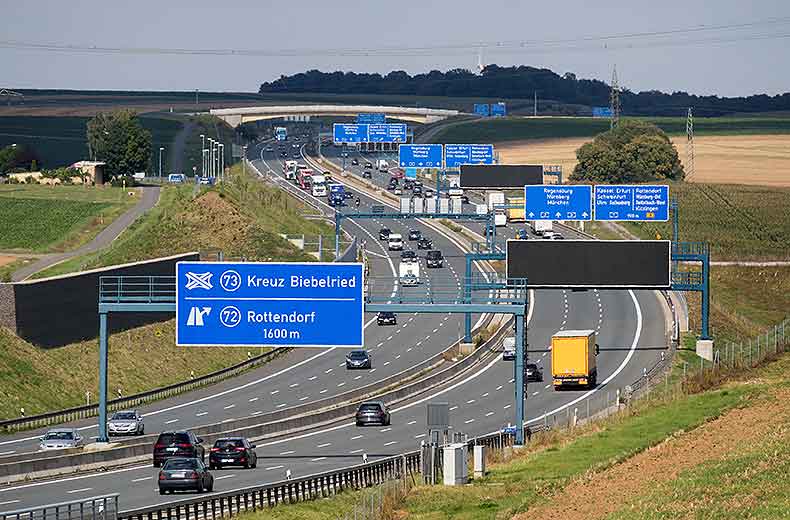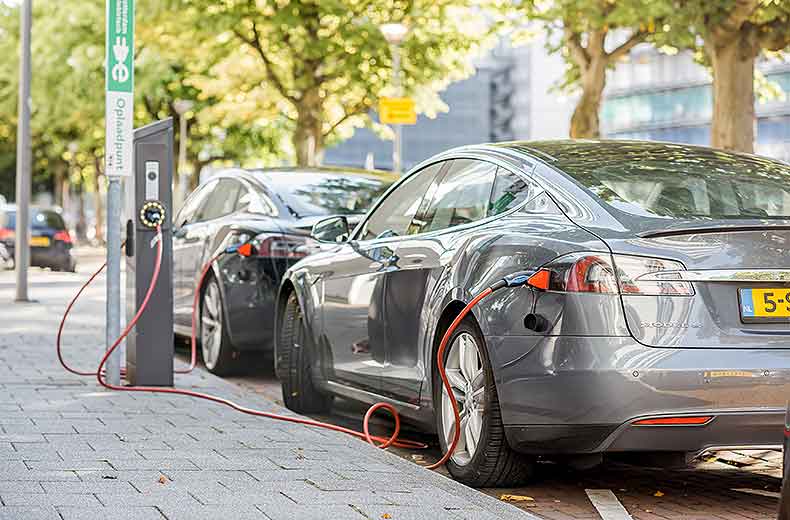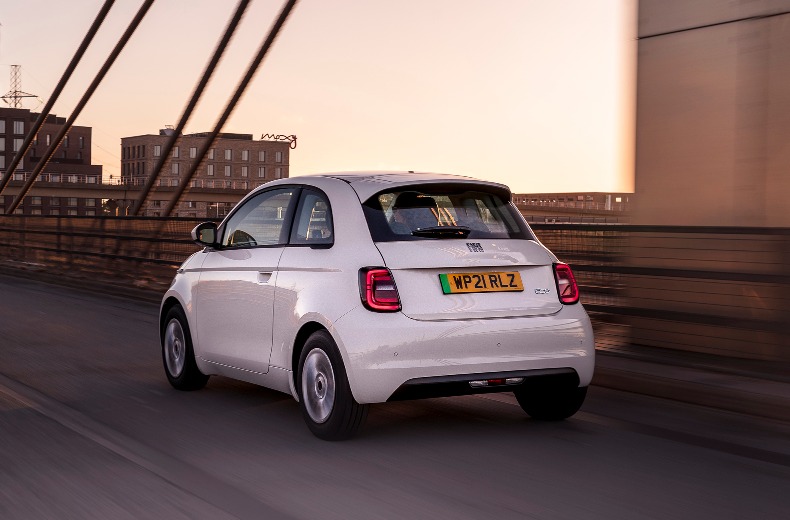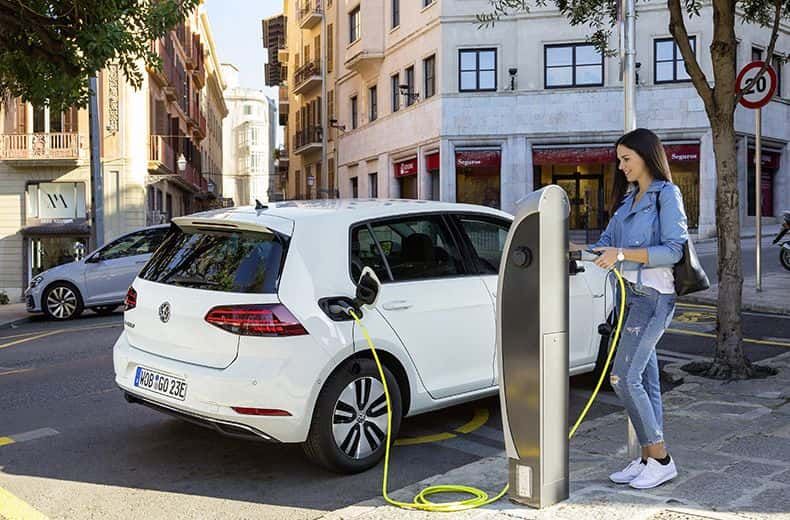According to the European Automobile Manufacturers' Association (ACEA) there were over 632,000 public EV charging points in the EU by the end of 2023 - up from just over 240,000 in 2021. Around 13% of those are classed as rapid chargers (outputting over 22kW of power).
While paying for a charge using a debit or credit card is increasingly commonplace in the UK, many organisations in Europe require registration via a smartphone app or RFID card.
Here's everything you need to know ahead of your electrically-powered European road trip.
Where to find EV charging points in Europe

Most EVs have sat-nav that can help you locate the nearest charging point. Newer electric cars can go one step further - the sat-nav is able to work out not only where you need to charge along your route, but also how long you need to charge for.
However, there are also websites where you can find the location of EV chargers. These include Chargemap, Open Charge Map, Plugshare and Plugsurfing. EV-specific route planners like A Better Routeplanner (or ABRP in your phone's app store) can also find you the best route including your charge stops.
Throughout Europe, you will find places to charge an electric car in motorway service areas, fuel stations, public car parks and supermarkets. Train stations are also locations where you’ll be able to charge an EV in Europe. And if you’re staying in a hotel, convenient ‘destination chargers’ will possibly be found there, too.
As with long-distance EV journeys in the UK, you should be planning ahead. Regular charging means you take a break, which is encouraged for drivers of conventional cars, so driving an EV in Europe shouldn't take much more thought than normal.
- Electric cars – a definitive guide and tips for buyers
- Electric vehicle range – how far can I drive in an EV?
- Electric car charging – how it works and how much it costs
- How long does it take to charge an electric car? Charging speeds explained
The major EV charging networks in Europe

Tesla operates its global Supercharger network across Europe. With nearly 15,000 Superchargers at 1200 sites, finding one should be easy. Tesla drivers can enter a destination on their car’s touchscreen and its trip planner will guide them through Superchargers along the route.
If you’re charging an electric car in Europe, IONITY has over 600 charging stations along major European motorways. A joint venture between BMW, Mercedes-Benz, Ford, Hyundai and the Volkswagen Group, there is an average of six charging points per station. All use the CCS European ultra-rapid charging standard. High-speed 350kW chargers can add 62 miles of charge in eight minutes.
Another pan-European network, Allego, offers more than 34,000 charge points. While some of those are in motorway service areas, you will also find them in McDonald’s restaurants, Geant Casino supermarkets and Postillion hotels. Payments can be made via Allego’s Smoov app, or by contactless or charge cards.
Plugsurfing is another European-wide network you could use for charging an EV in Europe. With its smartphone app, you can use upwards of 850,000 chargers, including those from different networks such as Allego, EnBW, Eon, Innogy, IONITY and Vattenfall.
NewMotion, a member of the Shell Group, also operates a pan-European EV charging service. Access to over 250,000 public charge points is via a charge card.
- Driving in Europe checklist
- Driving abroad? Be prepared, take out European Breakdown Cover
- Can electric cars tow?
- Buy a car with RAC Confidence

Instant cover available
• 24/7 rescue at the roadside
• Help to get home if your vehicle can't be fixed
• 5 star Defaqto rated cover

Driving an EV in Europe
Here are some of the major EV charging networks in popular European holiday destination countries.
Ireland
EV drivers can access over 2,100 charge points in Ireland. In addition to the networks listed below, IONITY and Tesla points can also be found.
- EasyGo: over 4,500 fast charging CCS and Chademo points across Ireland, Northern Ireland and the UK, including those from Circle K and ESB ecars. No subscriptions, just pre-paid credit. Buy a £6 access fob if you don’t want to use an app. Charging costs are automatically deducted from your EasyGo balance. Also a Pay-As-You-Go option which uses debit/credit cards.
- ESB ecars: €4.79 monthly subscription or Pay-As-You-Go, with prices from €0.47/kWh for 22kW chargers. Register for an account via the ecar connect smartphone.
- GoCharge: Register through the smartphone app, and charge via the app or key fob.
France and Belgium
In France, EV drivers can refill their batteries at around 120,000 charge points. Belgium has a choice of over 44,000.
- French supermarket chain Auchan has a network of fast chargers at its stores.
- Izivia, part of EDF Energy, allows access to around 200 networks and 300,000 chargers in France and Europe, including Corri-Door and Indigo. There are subscription or Pay-As-You-Go options. Register for an Izivia Pass RFID card and activate it via an app. You can also use the app at charge points to begin the charging process, while the Izivia Pass card allows you to benefit from the best price on Corri-Door.
- Fulli offers a similar set-up, with an RFID card and the choice of a €24 subscription, which permits national access to more than 400,000 chargers in France and elsewhere in Europe including Belgium, Germany, Ireland, Italy, the Netherlands and Spain.
- Oil company Total has rolled out 175kW fast chargers on its fuel forecourts, adding to the 20,000 charge points it already has in France, Belgium, Germany, Luxembourg and the Netherlands. It also operates the Bélib network of 2,000 chargers in Paris.
Spain and Portugal
If you are charging an electric car in Spain, you can choose between more than 30,000 chargers. In Portugal, there are around 5,500.
- Energy company Repsol has over 2,400 charging points in Spain supplying 100% renewable energy.
- Iberdrola and First Stop have around 7,000 chargers in their network. Iberdrola charge points are accessed via an app, via which you can check prices and book a charger.
- Easycharger has its own network of chargers accessed by an app, but also covers other networks, too. Prices start from €0.25/kWh.
- EDP has a network of chargers in Spain and Portugal, which can be used by its Electric Mobility Card.
- Endesa X operates a charging network that includes fast connections at Spanish McDonald’s restaurants. Its JuicePass app allows access to the points, but if you register, you’ll get reduced rates.
- To use Portugal’s Mobi.E network or chargers, you need an Electric Mobility Service Provider access card or app.
Germany, Austria and Switzerland
With nearly 115,000 chargers, Germany has one of the biggest EV charging networks in Europe. Austria has approximately 17,700, while there are over 10,000 in Switzerland.
- Through its EinfachStromLaden smartphone app, charging chip or card, you can charge an EV in Germany, Austria or Switzerland with Maingau. There are a total of 600,000 charging points on the network across Europe.
- German energy supplier Ladenetz offers a network of chargers that are accessed via an app, from where you can pay for charging without pre-registering.
- Supermarket chain Aldi is also installing more EV chargers in its car parks, with plans to have a total of 1,500 in Germany by 2025.
- EV drivers in Austria also have the choice of the Smatrics charging network. With no subscription, 22kW charging prices start from €0.55/kWh. Access is via an app or RFID card.
Italy
Italy has a network of nearly 50,000 chargers. As well as smaller providers, drivers can charge their EVs at IONITY stations.
- BeCharge operates around 20,000 EV chargers in Italy, accessed by registering through an app or using a card.
- Enel X’s JuicePass app allows access to its 74,000 charging points.
The Netherlands
The country with the most charging points, electric car drivers in the Netherlands can choose from over 140,000 chargers.
- The Fastned high-speed charging network offers refill options from €0.69/kWh if you’re a non-subscriber. Payment is by charging card unless you register, when you can also pay via a bank card. Monthly €11.99 subscriptions take the cost down by 30%.
- Vattenfall operates more than 37,000 chargers in the Netherlands and its InCharge network can be accessed via charging fob, card or app.
- Total has 18,000 chargers in its network, and drivers can use Ladenetz charging points, accessed through an app.
Denmark, Norway and Sweden
In Scandinavia, Denmark has around 17,500 charge points, compared to Norway’s 27,500. Sweden has around 37,000.
- Clever’s Danish network of chargers is extensive. Pay and charge directly through its app or with Apple Pay or MobilePay.
- E.ON chargers can be accessed via its E.ON Drive app or a credit card, while subscribers can use a charging chip in other European countries.
- EV drivers in Denmark can use Sperto charge points via an RFID tag or pay online. Other suppliers’ tags can also be used.
- Spirii offers its Spirii Go app, which will take charging payments and allow eRoaming at charge points from other operators who are part of Hubject.
- In addition to NewMotion and Plugshare, Mer offers EV drivers in Norway points to charge an electric car in Europe. Access is through an app or RFID card and registered members can use discounted rates.
- Nordic network Recharge has charging stations in Norway, Sweden and Finland. Drivers can refill their EV by QR code, RFID tag, SMS or app. Prices for 22kW charging start at €0.40/kWh.
- Vattenfall also runs chargers in Sweden. Like in the Netherlands, its InCharge network is used with a charging fob, card or app.
Eastern Europe
If you’re venturing east, the Czech Republic has around 2,500 EV chargers, Poland has approximately 7,300, while you can charge at just over 1,300 in Croatia and 4,000 in Hungary.
- The ČEZ Group in the Czech Republic offers 230 charging stations, via an RFID charging chip.
- In Poland and the Czech Republic, the Orlen Charge app gives you access to a network of charging points, and you can pay by debit or credit card through the app itself.
- To use the Polish GreenWay charging network, you have to register first through a smartphone app to receive an RFID card.
- The ELEN network of 22-150kW chargers in Croatia are free to use, accessed by a smartphone app.
- In Hungary, the Mol Plugee charging network can be used registration-free, but registered drivers have a faster process and discounted rates.
- Hungary’s PARKL network can be used via an app, with or without registration, but non-registered users will have to input their phone number and email address.
Charging around Europe

Taking an electric car to Europe is becoming increasingly viable and straightforward. However, as with longer EV journeys in the UK, it is important to plan ahead – and to have RAC European breakdown cover as a back-up.
The RAC is the first breakdown assistance company in the UK to introduce a mobile charging unit for electric vehicle owners who have run out of charge. We are the number one provider of breakdown cover for electric vehicles. Find out more about RAC EV Boost. Also, please visit RAC Charge Watch.
- Did you know we offer temporary car insurance with an optional extra to cover countries within the EU, EEA, and Switzerland
Return to the RAC Drive Electric cars hub
Read our guides on choosing, charging and running an electric car.
















